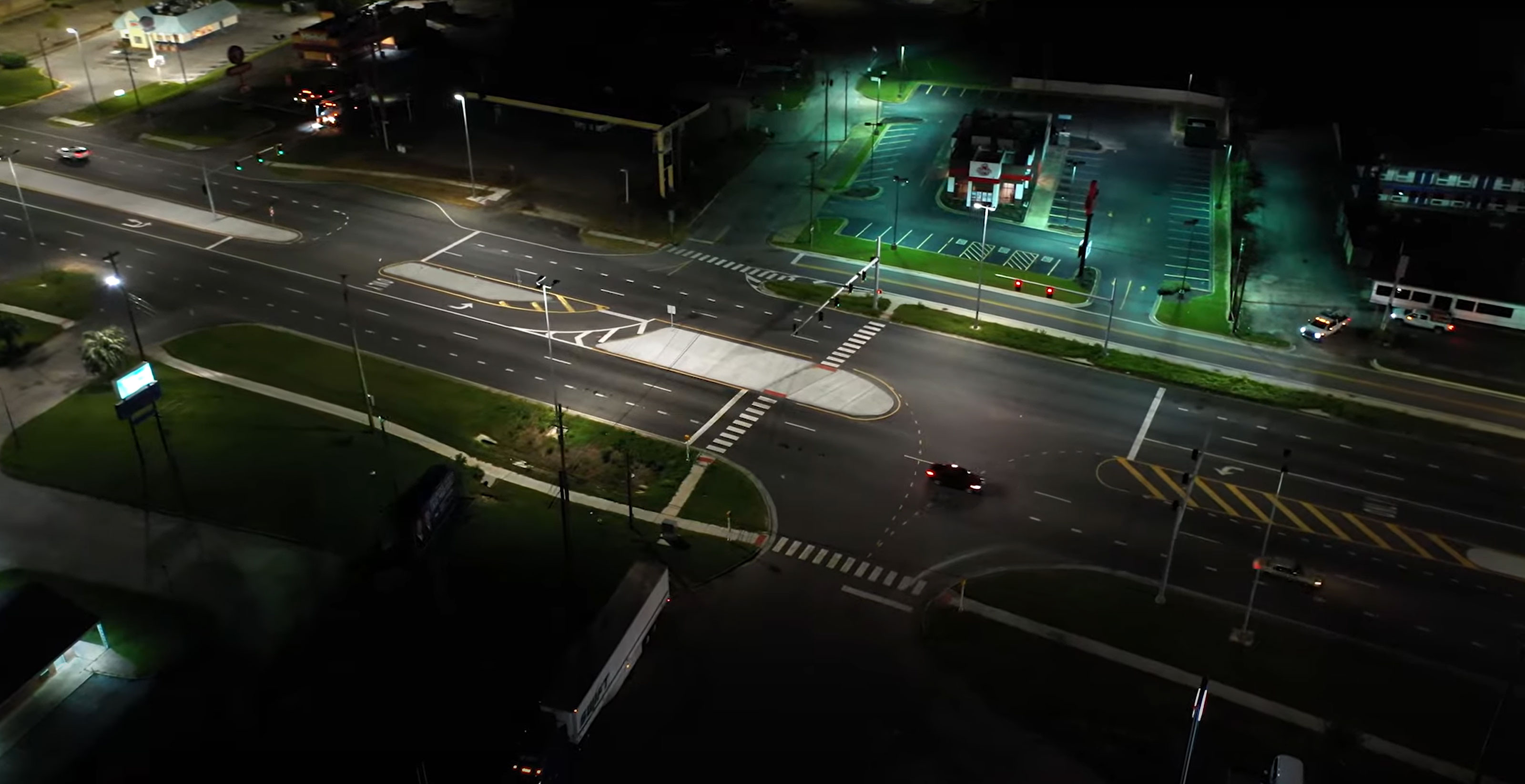
Nighttime Visibility for Safety: Visible Solutions
How can transportation professionals protect pedestrians crossing the roadway at night when drivers often cannot see them? The answer: apply the latest technology improvements where they are needed most.
The nighttime fatality rate on U.S. roadways is three times higher than the daytime rate, and 76 percent of pedestrian fatalities occur at night. Nighttime visibility for safety, an Every Day Counts round seven (EDC-7) initiative, will accelerate the deployment of methods for enhancing nighttime roadway visibility that can save lives.
The nighttime visibility for safety initiative will help promote improved lighting and other countermeasures transportation agencies can deploy to enhance visibility for all road users, particularly near activity centers like transit stops, schools, parks, and entertainment hubs.
“Our attention is focused on enhancing visibility at locations where we know pedestrians are expected to cross the roadway to get to a destination,” said George Merritt, senior safety and geometric design engineer at the Federal Highway Administration (FHWA) Resource Center and co-lead for the EDC-7 innovation. “With this focus, we are committed to assisting agencies large and small to create safe access to community resources and essential services.”
“This EDC-7 initiative is an opportunity for FHWA to work closely with State and local agencies to save lives by implementing improvements when and where we can make the most difference,” Merritt added.
Based on preliminary data reported by States, the Governors Highway Safety Association estimated that drivers struck and killed 7,508 pedestrians in 2022—an average of 20 deaths a day and the highest number since 1981. Data from the National Highway Traffic Safety Administration also showed that pedestrians in minority populations were at greater risk of dying in a crash than white pedestrians.
Safe System Approach
A focus on pedestrian safety must reach beyond educating road users on how best to navigate the road network. The EDC-7 effort will focus on creating safer roads, which is an element of the Safe System Approach (SSA). The SSA addresses transportation system risks by building and reinforcing multiple layers of protection to both prevent crashes from happening in the first place and minimize the harm caused to those involved when crashes do occur.
The EDC-7 implementation team will offer technical training and support for lighting and other visibility improvements to Local Technical Assistance Program and Tribal Technical Assistance Program centers.
“We believe some of the most important community activity assets such as schools, recreation centers, transit, entertainment, and hospitals are where we should improve safe access for pedestrians, especially after the sun goes down,” Merritt said, noting the innovation is especially useful to agencies that consider equity in safety a priority. “People need and want safer access to essential services and community resources. If we focus on developing partnerships with community stakeholders in these locations, we are confident we will help expand what works to make communities safer and more accessible.”
Research indicates that continuous lighting installed on both rural and urban highways may reduce nighttime injury crashes by 28 percent. Nighttime crashes at rural and urban intersections can also be reduced by up to 38 percent using lighting.
Watch a video to learn how the Florida DOT increased pedestrian safety by installing LED lighting.
Credit: FHWAFlorida is one State already seeing pedestrian safety benefits from improved roadway lighting. The Florida Department of Transportation (FDOT) invested $100 million at the district level to replace high-pressure sodium lighting with light-emitting diodes (LEDs) at 80 percent of the State’s most dangerous intersections—creating better visibility where it was needed most. FDOT’s District 7 has reported crash reductions at locations with the new LED lighting of up to 65 percent.
“With the opportunity to promote this innovation, we want to help promote SSA,” said Joe Cheung, senior safety engineer at FHWA Office of Safety and co-lead for the EDC-7 innovation. “By focusing on visibility enhancements for safer roads, they will be able to provide a redundancy in safety for all road users.”
Beyond Lighting
Transportation agencies can also improve nighttime safety by applying crosswalk visibility enhancements, applying edge and center line markings, and improving signing and pavement marking practices and procedures, among other traffic control device enhancement strategies.
“It is important we reach local agencies,” Merritt said. “It’s going to take everyone doing all we can to help reduce the number of nighttime fatalities.”
This effort benefits from resources already available through several initiatives on lighting and visibility underway by FHWA.
“There is a lot about nighttime visibility that most people don’t fully appreciate—it is a very complex area,” Merritt said. “We hope to give agencies the tools and resources to apply improvements that will reduce the risk of serious injury or fatal crashes.”
—MORE INFORMATION
Visit the EDC-7 Nighttime Visibility for Safety webpage.
Visit FHWA’s Roadway Lighting Resources webpage.
Contact Joe Cheung of FHWA’s Office of Safety or George Merritt of the FHWA Resource Center.
Subscribe to the Nighttime Visibility for Safety e-bulletin.
Disclaimer: The U.S. Government does not endorse products or manufacturers. Trademarks or manufacturers’ names appear in this document only because they are considered essential to the objective of the document. They are included for informational purposes only and are not intended to reflect a preference, approval, or endorsement of any one product or entity.
Except for the statutes and regulations cited, the contents of this document do not have the force and effect of law and are not meant to bind the States or the public in any way. This document is intended only to provide information regarding existing requirements under the law or agency policies.
Recommended Citation: U.S. Department of Transportation, Federal Highway Administration - Washington, DC (2023) Innovator Newsletter, September/October 2023, Volume 17 (98). https://doi.org/10.21949/1521759



